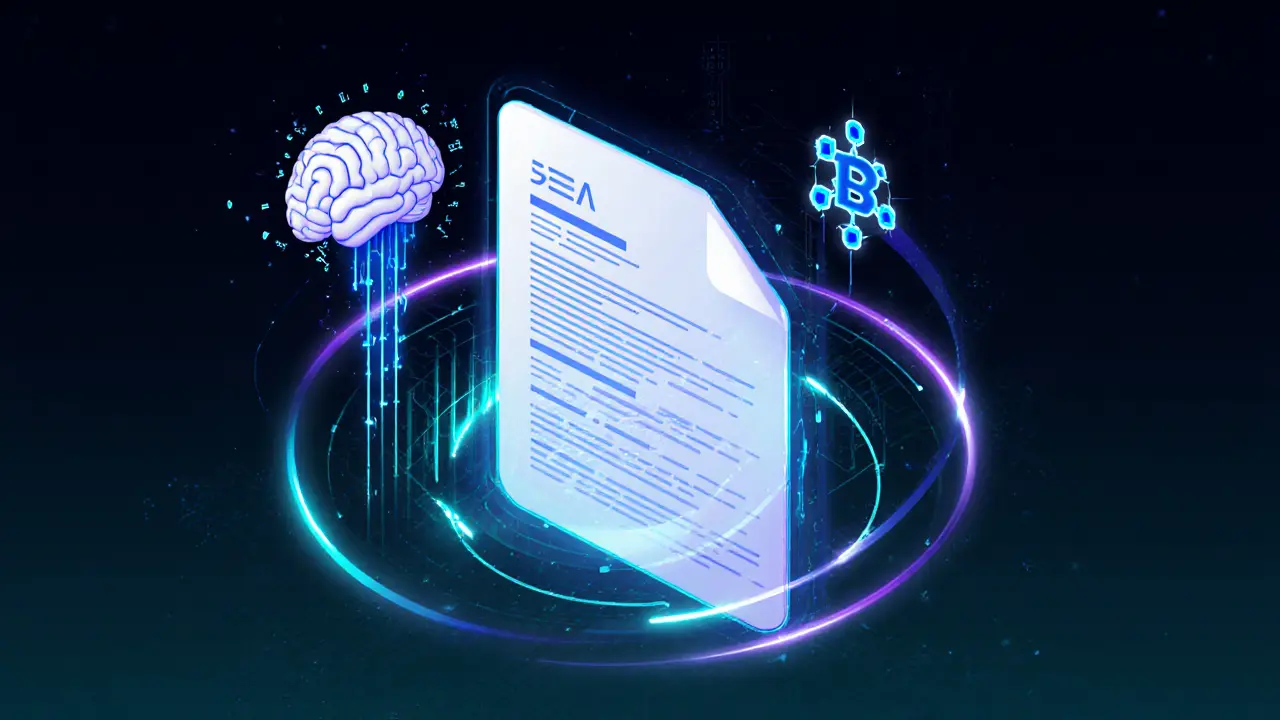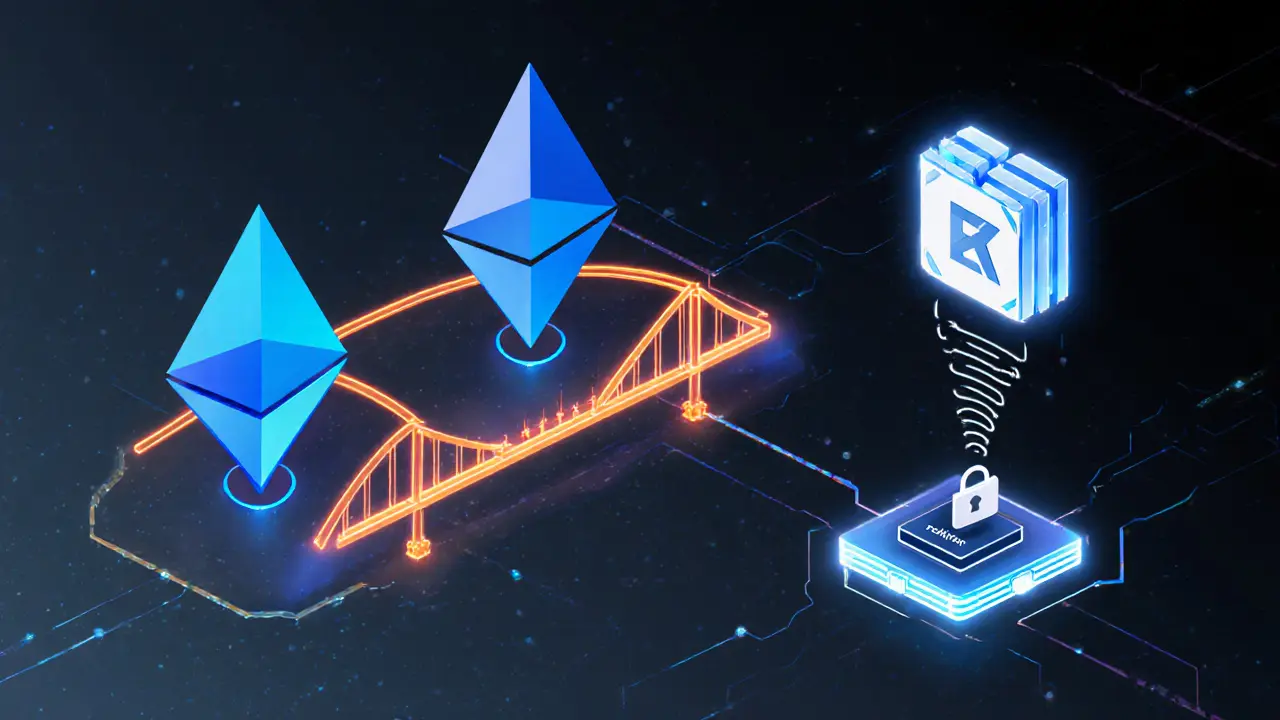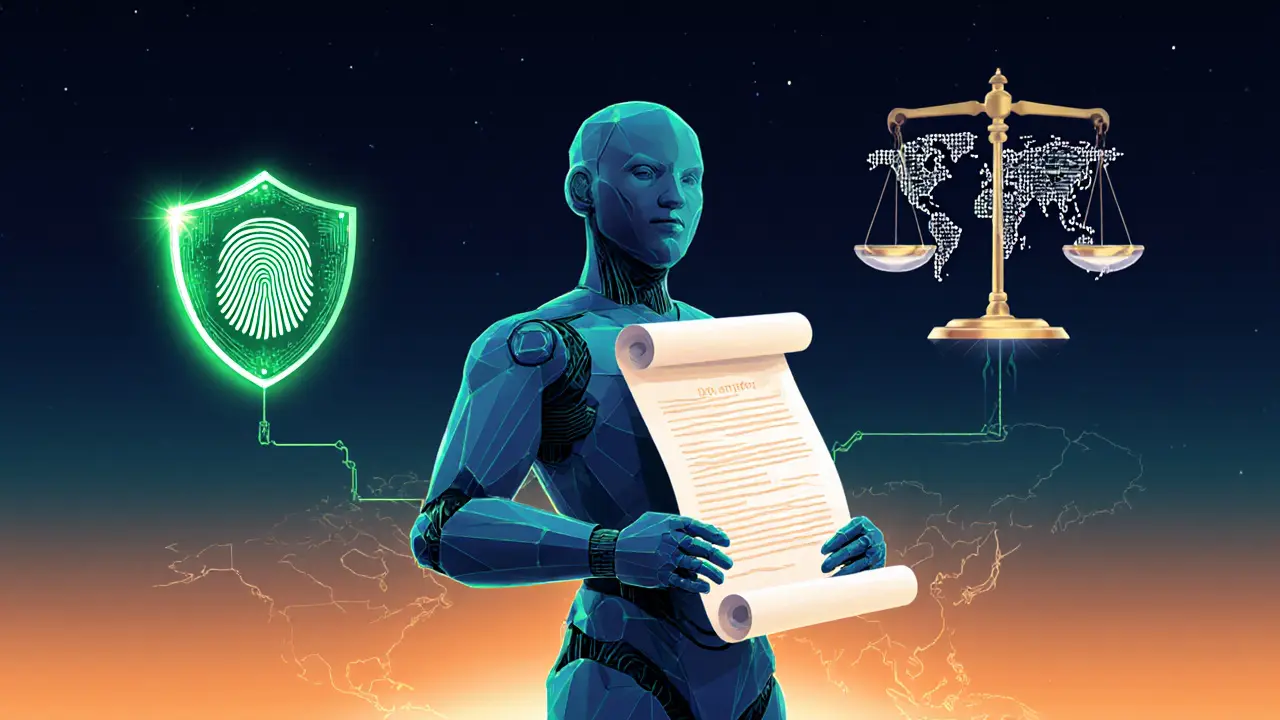May 10, 2025, Posted by: Ronan Caverly

Smart Contract Trends 2025 Explorer
Smart Contract Trends Overview
This interactive tool helps you explore the key smart contract trends shaping the decentralized application landscape in 2025. Select a trend area or impact level to filter results.
- AI-Driven Contracts: Contracts that use AI for real-time decision making
- Cross-Chain Interoperability: Enabling contracts to work across multiple blockchains
- Scalability Solutions: Technologies like ZK-rollups for improved performance
- Privacy Options: Choosing between public and private blockchain environments
- DAOs: Decentralized organizations managing smart contracts
When you hear the phrase Smart contracts are self‑executing code that runs on a blockchain, automatically enforcing agreements without a middleman, you probably picture simple token swaps. In 2025 the reality is far richer - they’re becoming AI‑powered, cross‑chain, and the core engine behind the next wave of decentralized applications (dApps). This guide walks through the biggest trends, why they matter for developers and businesses, and how you can start building the future today.
Why smart contracts matter for every dApp
At the heart of a decentralized app lies a set of rules the network can verify without trusting any single party. Those rules are encoded in a smart contract. Because the contract lives on an immutable ledger, users get:
- Trustless execution - no need to believe a counter‑party.
- Transparent audit trails - every state change is recorded.
- Cost savings - you skip intermediaries and reduce fees.
Combine that with the rise of decentralized applications and you have a platform for everything from finance to gaming, all while keeping user data in the hands of the owner.
AI‑driven contracts: the next intelligence layer
Artificial intelligence is no longer a buzzword for smart contracts; it’s an actual capability. AI‑driven smart contracts ingest real‑time data, run predictive models, and adjust terms on the fly. Imagine a supply‑chain contract that automatically ramps up inventory orders when a forecast predicts a sales surge, or a DeFi loan that tweaks interest rates based on market volatility without any human intervention.
Key attributes of AI‑enabled contracts include:
- Data feeds from trusted oracles.
- On‑chain inference engines (e.g., TensorFlow.js compiled to WASM).
- Feedback loops that update contract state post‑prediction.
Early adopters report up to a 30% efficiency boost in logistics and a 20% reduction in loan default risk, thanks to dynamic risk assessment.
Cross‑chain interoperability: breaking the silos
One of the biggest pain points in 2024 was that contracts only spoke the language of their native chain. Today, cross‑chain interoperability protocols like Polkadot’s XCM, Cosmos IBC, and the emerging Wormhole bridges let a single contract trigger actions on multiple ledgers.
Why it matters:
- Liquidity can flow freely between Ethereum, Solana, and emerging Layer‑2s.
- Developers can pick the best execution environment for each function - low‑fee rollups for micro‑transactions, high‑throughput chains for gaming.
- Users keep assets in one wallet while interacting across ecosystems.
Projects that have already gone multi‑chain report a 45% increase in active users because they removed the friction of swapping assets before using a dApp.
Scalability tricks: ZK‑rollups, AlkylVM, and beyond
Scalability remains a headline concern. Two innovations are gaining traction:
- ZK‑rollups batch thousands of transactions off‑chain and post a single succinct proof on‑chain, slashing gas costs dramatically.
- AlkylVM splits the virtual machine into a lightweight edge component that can run on IoT devices and a secure core on the blockchain, enabling true device‑to‑contract communication.
Combined, they let a single dApp serve billions of IoT sensors while still processing high‑value financial contracts on a mainnet.

Private vs. public blockchains: where smart contracts live
Not every use case needs a fully public ledger. Private blockchains offer permissioned access, faster finality, and stronger confidentiality. Industries with strict data regulations - healthcare, finance, and supply chain - are gravitating toward private deployments for smart contracts that handle PHI, KYC data, or trade secrets.
Key differences:
| Aspect | Public | Private |
|---|---|---|
| Access | Open to anyone | Permissioned members only |
| Speed | 5-15tx/s (Ethereum) | 1000+tx/s (Hyperledger) |
| Transparency | Full ledger visibility | Selective data sharing |
| Governance | Community‑driven | Enterprise‑controlled |
Hybrid models are also emerging, where a public layer handles token economics while a private layer processes sensitive business logic.
DAOs: the organizational engine behind smart contracts
Decentralized Autonomous Organizations (DAOs) are code‑based collectives that own and manage smart contracts. In 2024, DAOs captured the largest share of smart‑contract deployment, mainly because they provide transparent governance and reduce admin overhead.
Typical DAO benefits include:
- Token‑based voting on contract upgrades.
- Automated treasury management via pre‑approved spend rules.
- Community incentives that align contributors with protocol success.
Enterprise pilots in logistics are using DAOs to coordinate freight contracts across multiple carriers without a central scheduler.
Real‑world examples: what’s working and where the gaps remain
Here are three quick snapshots:
- DeFi lending platforms - Users can borrow stablecoins instantly, with AI‑driven risk models adjusting collateral ratios in real time. Issue: occasional oracle manipulation attacks.
- Gaming on the metaverse - In‑game assets are minted as NFTs, and smart contracts handle trades, royalties, and cross‑game economies. Issue: high gas fees on congested chains, though ZK‑rollups are easing the pain.
- Healthcare data exchange - Private blockchains store patient consent contracts, allowing providers to request data verified by the contract. Issue: regulatory uncertainty around cross‑border data flow.
Across the board, developers cite security audits and legal clarity as the top hurdles before scaling.
Getting started: a practical roadmap for 2025
If you’re ready to embed smart contracts into your product, follow this three‑phase plan:
- Learn the basics - Pick a language (Solidity for EVM, Rust for Solana) and run a “Hello World” contract on a testnet.
- Design for scalability - Decide whether you need ZK‑rollups, cross‑chain bridges, or a private network. Sketch data flows and estimate gas costs.
- Secure and iterate - Hire a reputable audit firm, set up a bug bounty, and adopt a continuous‑integration pipeline that runs static analysis on every pull request.
Typical timelines range from three to six months for a MVP, with ongoing upgrades as standards evolve.
Future outlook: what to watch in the next five years
The coming years will likely see three major shifts:
- Autonomous agents - Smart contracts will act as proxies for AI bots, negotiating services and paying each other in real time.
- Self‑sovereign identity - Protocols like Polygon ID will embed identity verification directly into contract logic, eliminating KYC bottlenecks.
- Regulatory integration - Governments are drafting standards that recognize on‑chain contracts as legally binding, which could unlock enterprise adoption at scale.
In short, smart contracts are moving from niche automation to the backbone of an AI‑enabled, interoperable digital economy.

Frequently Asked Questions
What is a smart contract?
A smart contract is a piece of code stored on a blockchain that automatically enforces the terms of an agreement without needing a trusted third party.
How do AI‑driven contracts differ from regular contracts?
AI‑driven contracts pull in real‑time data, run predictive models, and can modify their own parameters based on outcomes, whereas traditional contracts have static logic.
Can smart contracts work across different blockchains?
Yes. Cross‑chain protocols like Polkadot XCM, Cosmos IBC, and Wormhole let a contract trigger actions on multiple chains, creating a seamless user experience.
What are the main security concerns with smart contracts?
Common issues include re‑entrancy bugs, oracle manipulation, and improper access controls. A thorough audit and a bug bounty program are essential.
Should I use a public or private blockchain for my dApp?
If you need maximum transparency and open participation, go public. If you handle regulated data or need high throughput, a private or hybrid solution often fits better.
How long does it take to launch a smart‑contract‑based product?
A minimal viable product usually takes 3‑6months, depending on complexity, audit cycles, and integration of cross‑chain or AI components.
What future trends should I keep an eye on?
Watch autonomous agents that negotiate on‑chain, self‑sovereign identity solutions, and emerging regulations that recognize smart contracts as legally enforceable.
Write a comment
Comments
Dyeshanae Navarro
Smart contracts are like the invisible handshake that keeps promises safe; they let us build trust without a middleman, and that feels like a step toward a fairer internet.
May 10, 2025 AT 11:15
Matt Potter
Wow, the future looks unstoppable! AI‑driven contracts will shake up every industry and we should jump on board now, no hesitation.
May 13, 2025 AT 22:36
Marli Ramos
meh, looks cool 😒 but still a lot of hype 🙄.
May 17, 2025 AT 09:56
Christina Lombardi-Somaschini
Indeed, the rise of cross‑chain protocols such as Polkadot XCM and Cosmos IBC represents a pivotal evolution; they enable seamless asset movement, reduce friction, and thereby expand user bases-an essential development for mass adoption.
May 20, 2025 AT 21:16
katie sears
Considering cultural contexts, it’s fascinating how private‑chain solutions can respect data‑sovereignty laws while still offering the transparency that global communities crave.
May 24, 2025 AT 08:36
Gaurav Joshi
We must remember that technology is a tool, not a moral absolve; developers should embed ethical guardrails in every contract they write.
May 27, 2025 AT 19:56
Kathryn Moore
ZK‑rollups cut gas dramatically; cross‑chain bridges broaden liquidity; DAOs decentralize governance.
May 31, 2025 AT 07:16
Christine Wray
Balancing scalability and security is the real challenge, and the community seems to be making solid progress on both fronts.
June 3, 2025 AT 18:36
roshan nair
From a developer’s perspective, start with a solid testnet workflow-write in Solidity, use Hardhat for deployment, then integrate an oracle like Chainlink for real‑time data; this pipeline smooths the learning curve.
June 7, 2025 AT 05:56
Jay K
It is prudent to assess whether a public or a permissioned ledger better suits your compliance requirements before committing resources.
June 10, 2025 AT 17:16
Kimberly M
👍 Great points! 🔥 Keep the momentum going.
June 14, 2025 AT 04:36
Navneet kaur
Really, if you dont care about privacy then you are missing the point of private blockchains.
June 17, 2025 AT 15:56
Marketta Hawkins
Our nation should lead the charge on AI‑driven contracts, or else we fall behind 🌎.
June 21, 2025 AT 03:16
Drizzy Drake
Reading through this guide, I can feel the excitement building like a wave that’s about to crash onto the shore of mainstream tech. First, the idea that contracts can learn from data feels like giving code a brain, which is both exhilarating and a little scary. Imagine a supply‑chain contract that predicts demand spikes and auto‑reorders stock without human input-this could shave days off procurement cycles. Then there’s the cross‑chain magic: you could have a DeFi app on Ethereum that instantly settles on Solana, giving users the best of both worlds. Scalability isn’t just a buzzword; ZK‑rollups are already slashing gas fees so much that micro‑transactions become viable again. The privacy vs. public debate also matters: regulated sectors can keep sensitive data off public ledgers while still benefiting from immutability. I also love that DAOs are reshaping governance; token‑based voting aligns incentives and reduces bureaucracy. The roadmap laid out-learn basics, design for scale, secure and iterate-is spot‑on and realistic. Audits and bug bounties are essential; no amount of hype can replace solid security. In practice, I’d start with a simple Solidity contract, test on Sepolia, then layer on an oracle before moving to a rollup. The timeline of three to six months feels right for an MVP if the team is disciplined. Looking ahead, autonomous agents negotiating on‑chain could become the next frontier, automating services we now do manually. Overall, this article captures the pulse of where the ecosystem is heading and gives concrete steps to get there.
June 24, 2025 AT 14:36
AJAY KUMAR
The drama of smart contracts unfolding across chains is nothing short of a cyber‑saga-heroes, betrayals, and glorious victories!
June 28, 2025 AT 01:56
bob newman
Sure, if the AI doesn’t secretly control the world, we’ll be fine-said no one ever. 🙃
July 1, 2025 AT 13:16
Anil Paudyal
Nice summary.
July 5, 2025 AT 00:36
Kimberly Gilliam
Another trend, another buzzword-yay.
July 8, 2025 AT 11:56
vincent gaytano
Honestly, all this talk about AI contracts is just a cover for the elite to lock us deeper into a digital matrix.
July 11, 2025 AT 23:16
Jeannie Conforti
Thanks for the clear steps, really helps beginners get started fast.
July 15, 2025 AT 10:36
tim nelson
While the roadmap is solid, remember not to over‑engineer-keep the MVP lean and iterate.
July 18, 2025 AT 21:56
Zack Mast
In the end, every contract is just a reflection of human ambition and its inevitable hubris.

Author
Ronan Caverly
I'm a blockchain analyst and market strategist bridging crypto and equities. I research protocols, decode tokenomics, and track exchange flows to spot risk and opportunity. I invest privately and advise fintech teams on go-to-market and compliance-aware growth. I also publish weekly insights to help retail and funds navigate digital asset cycles.